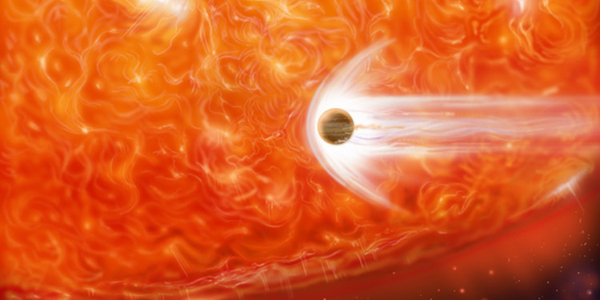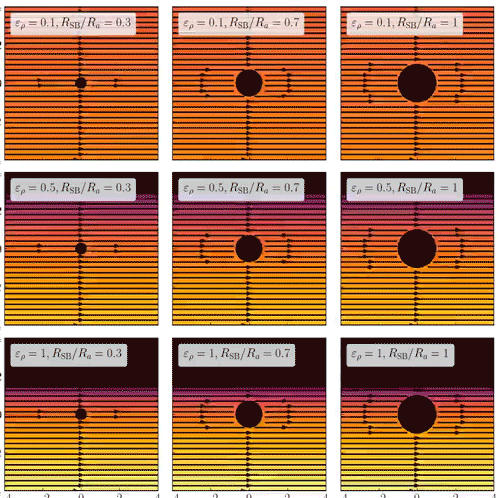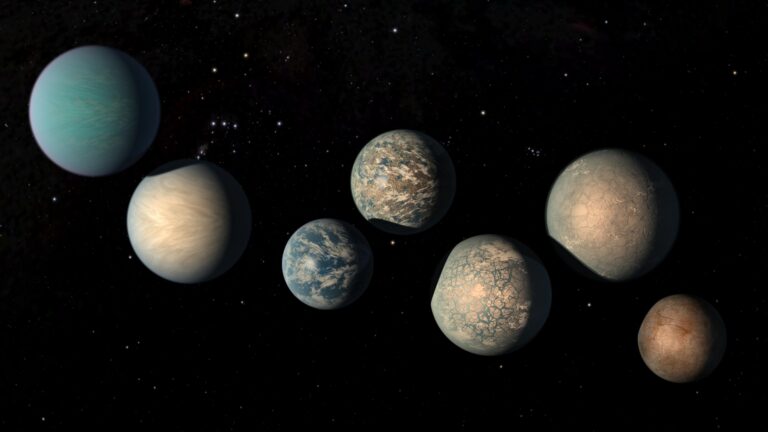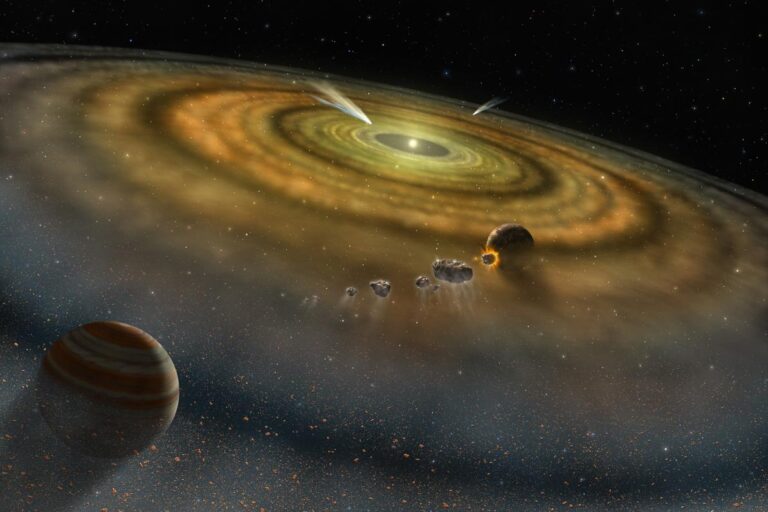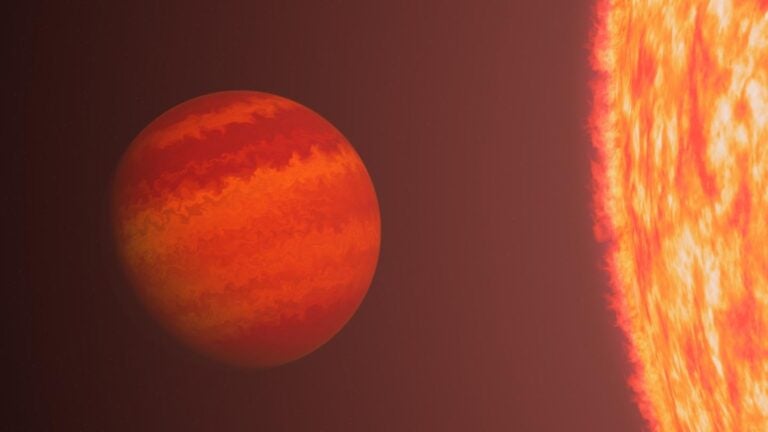You’ve likely heard the story by now: As the Sun grows old, it will swell up into a red giant. And as it expands, it will certainly swallow Mercury and Venus — and potentially Earth and even Mars — along the way.
This process, called planetary engulfment, is likely common across the galaxy, as aging stars eat up their own planets (and even companion stars or brown dwarfs). But astronomers still don’t understand exactly what happens to an unlucky planet that suddenly finds itself inside its parent star. Now, complex models called hydrodynamical simulations are shedding some light on the phenomenon, showing that factors such as a planet’s mass and the age of its star when it’s engulfed can have profound effects on what happens as the world is overtaken.
The results of these simulations, which have been submitted to The Astrophysical Journal, were presented this morning by lead author Ricardo Yarza of the University of California, Santa Cruz, at the 240th meeting of the American Astronomical Society (AAS) in Pasadena, California.
Zooming in
Because planets can be hundreds or thousands of times smaller than their parent star, running simulations that look at the entire system is challenging. Instead, the authors found a way to simplify the picture by only modeling the immediate portion of the star’s atmosphere surrounding the planet as it is engulfed. During his presentation, Yarza likened it to zooming in on a single tree in a photo of a larger landscape: Details on that tree are lost when you take a wide-field image, but homing in on the tree for a closeup lets you see everything exquisitely, though at the cost of the larger picture.
This technique allowed the team to take a close look at how the star’s gas interacts with and swirls around the planet, particularly as drag forces transfer orbital energy from the planet’s motion to the star’s interior. This energy exchange can have profound effects, including pumping up the star’s rotation, changing its chemical composition, or even unbinding and ejecting some of the star’s atmosphere.
“The way I think about engulfment is to think of the star as a cup of coffee and the planet as a spoon,” Yarza said. “Once you put the spoon inside the cup of coffee and you start stirring it, you’re obviously making the coffee rotate. So once the planet enters the star, it’s kind of stirring it up from the inside.” This could in turn explain the faster-than-expected rotation of some evolved stars, which may have eaten their planets and consequently been stirred up from the inside.
Engulfment could also explain odd planetary systems littered throughout our galaxy: White dwarfs — the still-glowing embers of Sun-like stars — with closely orbiting planets or brown dwarfs. In this case, “If you stir the coffee cup hard enough with the spoon, some of the coffee’s gonna spill out,” Yarza said. Essentially, a massive enough planet or brown dwarf stirs the star up so much that its outer layers are ejected from the system entirely. The energy exchange also shrinks the object’s orbit, and “you end up with a planet or brown dwarf orbiting what’s left at the center.”
One particularly interesting conclusion of the new work, Yarza said, is that the simulated planets injected energy into their stars at rates different than expected based on pen-and-paper models. The differences, he said, were as large as a factor of 10 and dictate the effects engulfment has on the structure of the star. The simulations suggest that chowing down on its planets can increase the brightness of a star by up to 10,000x for a short (cosmically speaking) period of time lasting between about one thousand and a few thousand years.
Fine tuning
As is often the case, the devil is in the details. According to these new calculations, what happens when the planet is engulfed — including whether or not it survives and how it affects its parent star — depends on several factors.
An object must be at least 100 times the mass of Jupiter (putting it firmly into brown dwarf territory) to liberate material from the star’s outer envelope — if the star has thus far only expanded to less than 10 times the radius of the Sun. At later times, after the star has expanded further, a planet just 10 times Jupiter’s mass could free material from the star. This also shrinks the planet’s orbit significantly, dropping it closer to the final stellar remnant when the dust and gas of the red giant phase clear.
The researchers hope their work can provide a starting point for future studies focused on the interactions between aging stars and swallowed planets. By first understanding this smaller, zoomed-in model, other teams can then expand on the work to take a look at the bigger picture to visualize the entire structure of the parent star.
“A significant fraction of planetary systems will experience engulfment,” Yarza said, in which at least one planet is engulfed. That means better understanding this process — and how it affects the host star — is key to understanding the evolution of the stars that serve as building blocks for everything else in the universe.

